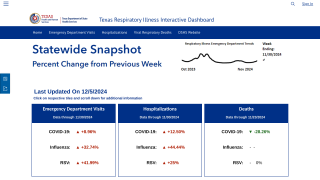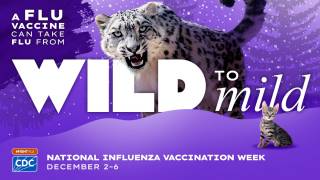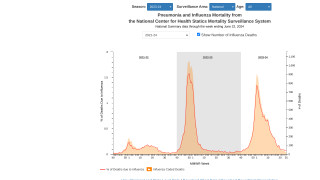Harvard Measurably Misses Flu Vaccination Goal

Harvard University Health Services (HUHS) announced it fell short of an influenza vaccination goal to increase the undergraduate immunization rate.
According to reporting in The Crimson by staff writer Michelle G. Kurilla on December 22, 2019, the HUHS flu vaccine campaign began on September 30th and reached 2,762 Harvard undergraduates, which is an increase from 2,391 vaccinations delivered last flu season.
The data provided by HUHS Senior Director of Nursing and Health Promotion Maria Francesconi represents a 15.5 percent year-over-year increase in flu shots.
The Crimson further reported that Francesconi said ‘while HUHS did not ultimately meet their 20 percent increase goal, her team was pleased to come close.’
In aggregate, this data suggests the overall Harvard undergraduate population of 6,699 was about 41 percent vaccinated during the flu vaccination campaign in 2019.
Since vaccine manufacturers have projected that they will supply as many as 162 million to 169 million doses of influenza vaccines for the 2019-2020 season, this vaccine supply anticipates immunizing about 49 percent of the 330 million people in living in the USA.
Last year’s flu shot coverage among people 18 years of age and older was reported by the Centers for Disease Control and Prevention (CDC) to be about 45 percent, which is an increase of 8.2 percentage points from the 2017–18 flu season.
This CDC data published on September 26, 2019, indicates Harvard’s undergraduate students are about 10 percent less protected (45% vs 41%) from flu viruses than the average USA resident.
HUHS employed several strategies to boost vaccination rates this year with the help of undergraduate HealthPALs and communicated with administrative offices to promote the clinics over email and social media.
Additionally, HUHS targeted the Harvard Athletics Department by holding vaccination clinics specifically aimed at student-athletes.
Francesconi concluded saying ‘she hopes the increased number of vaccinated Harvard affiliates will reduce the number of influenza-like-illness (ILI) cases at HUHS this year.’
Reductions in influenza cases generally produce lower healthcare costs, fewer flu-related fatalities and a healthier, more productive community.
However, new data from the Centers for Disease Control and Prevention (CDC) indicate this year’s flu season is now in full force, as of December 20, 2019.
As a comparison, during the 2017-2018 flu season, ILI activity began to increase in November, reaching an extended period of high activity during January and February, and remained elevated through the end of March.
The highlights from the new Week #50 report, with data as of December 14th, are as follows:
- All regions of the USA are seeing elevated levels of ILI.
- Activity is being caused mostly by influenza B/Victoria viruses, which is unusual for this time of year.
- A(H1N1) viruses are the next most common and are increasing in proportion relative to other influenza viruses in some regions.
- Estimates for this flu season shows there have been at least 3.7 million flu illnesses, 32,000 hospitalizations and 1,800 fatalities from flu.
- The CDC has confirmed 19 pediatric fatalities related to this season’s flu viruses. The state of Texas has reported about 32 percent (6) of the pediatric fatalities.
- Thirteen pediatric deaths were associated with influenza B viruses.
- Almost all of the influenza viruses tested this season are susceptible to the 4 FDA-approved influenza antiviral medications recommended for use in the USA this flu season.
Because transmission of influenza viruses to others may occur one day before symptoms develop and up to 5 to 7 days after becoming sick, the disease can be easily transmitted to others, such as classmates.
For those living with heart disease, lung disease, and diabetes, any influenza infection can exacerbate their condition or trigger an event.
It’s not too late to get vaccinated, says the CDC.
Flu vaccination is always the best way to prevent flu and its potentially serious complications. The CDC suggests everyone 6 months of age and older should get a flu vaccine every season, with rare exceptions.
This flu shot suggestion from the CDC includes pregnant women.
Recent flu vaccine news
- Childcare Leaders Found Under-Vaccinated Against Influenza
- Seniors More Protected By Adjuvanted Influenza Vaccine
- Which Vaccines Are Required Before Grandparents Hold Newborns?
- Using Virtual Reality to Increase Flu Shots
Most flu vaccines available in the USA protect people against the 4 different influenza viruses for the 2019-2020 flu season.
Since any vaccine can cause a side effect, vaccination decisions should be part of an ongoing discussion between a provider and patient, says the CDC.
Influenza vaccine news is published by Precision Vaccinations.
Our Trust Standards: Medical Advisory Committee
- Harvard University Health Services Falls Short of Flu Vaccination Goal
- Bad flu season predicted — did you get your shot?
- HUHS Plans New Flu Vaccination Initiatives, Hopes to Increase Flu Vaccine Rate by At Least 20 Percent
- CDC: Influenza (Flu) General Population Vaccination Coverage
- CDC: Weekly US INfluenza Surveillance Report (FluView)
- CDC: Key Facts About Flu Vaccines


























